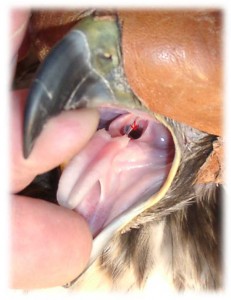If you have pets at home you probably have tried all the tricks there are. There is the medicine hidden in the cheese,medicine in pill pockets and for humans you may have flavor added to your elixir. But, what about the animals at the museum? Chinchillas don’t chow down on cheese and reasoning with a reptile rarely works. At the museum we have to be clever, because sometimes the animals can eat around the medicine or not take it at all.
Yona, the bear gets a daily dose of cosequin and efa caps. To get her to take her medicine, we crush the cosequin into a fine powder and mix it with syrup or applesauce.
The wolves get their medicine put in mice or liver sausage to prevent heart worm. Since there are two wolves, we need to make sure they each get their share. This requires us to place the medication in two totally different spots of the exhibit. We watch the normal habit of our wolves when placing regular food to know that when something like this is done, the male goes to one place in the exhibit and the female ventures off to another.
With lemurs it usually varies. What one lemur may like the other may not be fond of. I know we have used concoctions that contain apple juice and jelly.Sometimes they will take it in a syringe and at other times they may drink it from a bowl.Sometimes they want you to hold it for them and sometimes you have to be out of view. It all depends.


Sometimes we have to give medicine to reptiles and birds. This is a lot trickier because their diet or sweet (beak)tooth is not as diverse as a opossums may be. Crickets have been injected with de-worming medicine, but that got to be way too messy and the turtle or dragon may have to eat way more to ingest the full dosage.The barred owls live together so we cant put de-worming in their mice because we don’t know who will get what. For the animals to remain healthy we need to administer the medication in a syringe without a needle. This is not as simple as squirting the liquid into the bird or reptiles mouth,if you were to do that they could simply open their mouth after wards and shake out the medicine. To do this you need to get into the birds mouth and disperse it into the back of their throat however, you cannot let this medicine get into the trachea which is right in front of the throat. If this happens the bird/reptile can aspirate and die.

 Photo
Photo
Mice sausage? Where do you get mice sausage?
From tiny little butchers.:)
My process of giving medicine to my pets is that, I have to mix it to their food so that they will not know about it. And it is very effective.